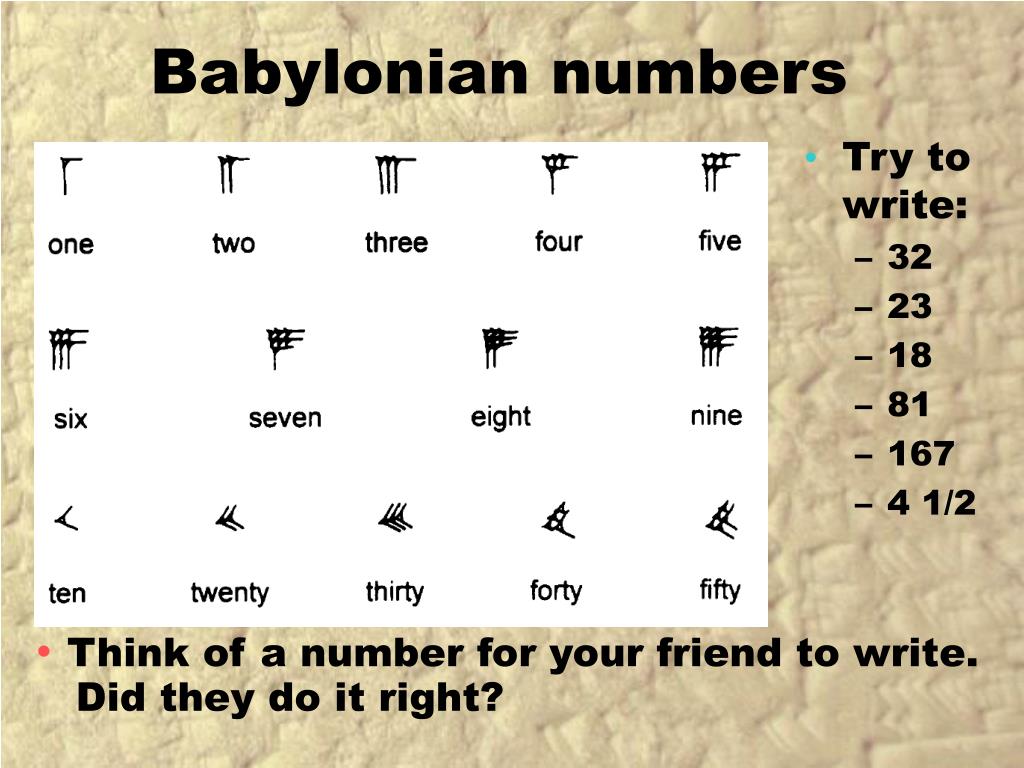

Babylonian numerals guide series#
Ī common theory is that 60, a superior highly composite number (the previous and next in the series being 12 and 120), was chosen due to its prime factorization: 2×2×3×5, which makes it divisible by 1, 2, 3, 4, 5, 6, 10, 12, 15, 20, and 30. The legacy of sexagesimal still survives to this day, in the form of degrees (360° in a circle or 60° in an angle of an equilateral triangle), minutes, and seconds in trigonometry and the measurement of time, although both of these systems are actually mixed radix. Their system clearly used internal decimal to represent digits, but it was not really a mixed-radix system of bases 10 and 6, since the ten sub-base was used merely to facilitate the representation of the large set of digits needed, while the place-values in a digit string were consistently 60-based and the arithmetic needed to work with these digit strings was correspondingly sexagesimal. They lacked a symbol to serve the function of radix point, so the place of the units had to be inferred from context : 20px20px could have represented 23 or 23×60 or 23×60×60 or 23/60, etc. Babylonians later devised a sign to represent this empty place. A space was left to indicate a place without value, similar to the modern-day zero.

These symbols and their values were combined to form a digit in a sign-value notation quite similar to that of Roman numerals for example, the combination 20px20px represented the digit for 23 (see table of digits below). Only two symbols ( to count units and 20px to count tens) were used to notate the 59 non-zero digits. This was an extremely important development, because non-place-value systems require unique symbols to represent each power of a base (ten, one hundred, one thousand, and so forth), which can make calculations more difficult. The Babylonian system is credited as being the first known positional numeral system, in which the value of a particular digit depends both on the digit itself and its position within the number.


 0 kommentar(er)
0 kommentar(er)
